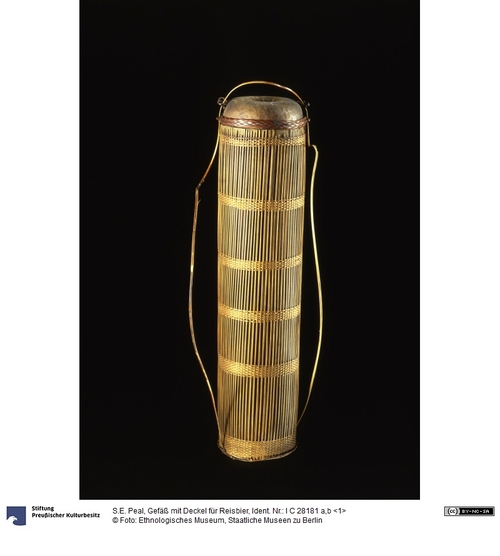Vessel with lid for rice beer (taw)
Wooden container with lid, decorated with bamboo strips.
Rice beer played a major role in all Naga groups, especially during festivals. Christian Nagas do not drink rice beer today. Alcohol is officially forbidden in Nagaland
Entry on historical index card: "Taw" vessel for rice beer. Naga of Banpara & surrounding area"
Collector: Peal, S.E.
Historical name of the place of manufacture: Assam
Today's population refer to themselves as Wancho, Nocte or Konyak Naga
en

